SUMMARY
This is AI generated summarization, which may have errors. For context, always refer to the full article.
![[ANALYSIS] Stories of the DDS commander](https://www.rappler.com/tachyon/2021/12/Stories-of-the-DDS-Commander.jpg)
The in-depth investigative report serialized by Rappler on the affidavit of former Davao City Policeman Arturo Lascañas submitted to the International Criminal Court (ICC) gives us the impression that Lascañas will be the star witness of the ICC prosecutor in the event that the case against Rodrigo Roa Duterte for crimes against humanity is eventually brought to trial.
Lascañas is the admitted former Davao Death Squad (DDS) police commander who carried out executions ordered by Duterte from 1989 up to 2016. He was one of Duterte’s most trusted assassins until he decided to expose his former boss and his comrades inside the DDS before the Senate in 2017. Since then, Lascañas was rumored to have been spirited out of the country so that he may testify safely before the ICC. His affidavit to the ICC relating all the activities of the DDS that he knows of is the first step towards this.
The 2009 CHR investigation
I did not meet SPO4 Arturo Lascañas during the investigation of the Commission on Human Rights (CHR) on the DDS in Davao City from March to September 2009. He did not appear in all the public hearings of the CHR in Davao City, although a total of three marathon hearings were held all throughout the CHR investigation. Only the following soon-to-be-identified DDS members (either by CHR witnesses, as well as eventually by Edgar Matobato and Lascañas) testified before the CHR during the 2009 investigation: Sanson “Sonny” Buenaventura, Alden Bacara Delvo, Catalino Jalalon, Noel Sandoval, Fulgencio Pavo, Vivencio Jumawan Jr., and Enrique Ayao.
Although he did not appear in the CHR hearings, Lascañas figured prominently in the investigation because his name was mentioned several times in the course of the public hearings. He was first mentioned by then SPO1 Vivencio Jumawan as a member of the Heinous Crime Investigation Section (HCIS) of the Investigation and Detection Management Division (IDMD) of the Davao City Police Office. In his affidavit submitted to the ICC, Lascañas calls the HCIS the Heinous Crimes Task Group – Davao City. Regardless of by what name it was known, the HCIS of the Davao City Police Office was basically the DDS of then mayor Rodrigo Duterte.
The next time the name of Lascañas came out in the 2009 CHR investigation was in the affidavit of a DDS insider who hid behind the name “Jose Basilio.” Basilio identified Lascañas as belonging to the top level of the DDS policemen together with Fulgencio Pavo, Jim Tan, and Jun Naresma. They gave out the orders even to the other DDS policemen, as distinguished from those who merely carried out orders. Basilio stated that Lascañas owned a green Toyota Hi-Lux with stripes and was the one who shot to death certain drug suspects in Toril district and Allan Estrada in Daco Ville Subdivision, the latter together with Edgar Matobato.
The reader must remember that this was 2009, basically seven years before Matobato and Lascañas became household names when they turned whistleblowers against the DDS and President Duterte during the Senate investigations on the extrajudicial killings now being perpetrated in the national drug war.
Personal notes
In my personal notes on the CHR’s investigation on the DDS, I divided the organization of the DDS into five, viz., the masterminds, the handlers, the police hitmen, the civilian hitmen, and the barangay-level officials. Based on the evidence we gathered then in 2009, I placed Lascañas, rather accurately, within the second rung of the organization together with police handlers (also known as the core group of DDS Commanders) Fulgencio Pavo, Catalino Jalalon, Jim Tan, and Jun Naresma. Only Duterte himself was of course higher in rank than the police handlers, together with retired policeman Sanson “Sonny” Buenaventura who gave out the orders of execution as relayed to him by Duterte.
Another conclusion I arrived at from the CHR investigation is the shift in the manner of operations of the DDS to a more complex organization revolving around the HCIS of the Davao City Police Office. This organizational change occurred upon the resumption of Duterte’s mayorship of Davao in 2001 after a hiatus term as congressman.
In this reorganization, the operations of the DDS expanded and its hierarchy became more established. As a result of this, DDS operations became more daring and more imbued with impunity. According to Lascañas, it is during this time that broadcaster Jun Pala and Moncayo, Compostela Mayor Joel Brillantes were assassinated by the DDS upon the orders and clearance of Duterte.
In his affidavit submitted to the ICC as reported by Rappler, Lascañas basically confirms all these central conclusions that I personally arrived at from the evidence gathered in 2009 during the CHR investigation, or more than a decade after. However, the investigation was still ongoing when I was eventually appointed Secretary of Justice on July 1, 2010 by then President Benigno S. Aquino III, thus leaving said investigation still unfinished when I left the CHR.
The foremost reason why the investigation then remained unfinished was due to the invalidation of the search warrant on the Laud Firing Range inside an old quarry located in Barangay Ma-a, Davao City. The old quarry was then reported to be the mass grave of DDS victims, and was owned by retired policeman Bienvenido Laud. The lawyer of Laud who asked a Manila court to invalidate the search warrant was Vitaliano Aguirre II. Eventually, he was to be the DOJ Secretary of Rodrigo Duterte when the latter became President.
Laud quarry search warrant
The reversal of the Manila court decision invalidating the Laud quarry search warrant is memorialized in the Supreme Court case of Retired SPO4 Bienvenido Laud v. People of the Philippines (G.R. No. 199032, November 19, 2014). The search warrant was invalidated by the Manila court in July 2009. This ruling was reversed by the Court of Appeals in April 2011, then the CA decision was affirmed by the Supreme Court only in 2014, or more than five years after the search of the Laud quarry was ordered stopped by the Manila court.
In its decision, the Supreme Court mentioned the fact that before its invalidation by the Manila court, the search warrant was already partly implemented by the elements of the PNP-Criminal Investigation and Detection Group, in coordination with the members of the Scene of the Crime Operatives on July 15, 2009. This initial enforcement of the search warrant yielded “positive results for the presence of human remains”. Actually, the series of searches on the Laud quarry took place on July 5, July 6, and July 11, 2009. As then CHR Chair, I led one of the expeditions into the Laud quarry where our small team was set up for an ambush by the DDS. This was according to admitted former DDS member Edgar Matobato.
According to Lascañas in his affidavit to the ICC, at the time these searches were being conducted, the lawyer of Laud, Vitaliano Aguirre II, instructed them that the human remains in the Laud quarry are those of Japanese soldiers who died during World War 2, as the quarry supposedly served as a Japanese military camp. As early as 2009, then lawyer for Laud, Vitaliano Aguirre II, already had a penchant for fabricating evidence, a talent that he would eventually use against me seven years later when he led and organized the fabrication of testimonies of Bilibid convicts and the filing of preposterous drug charges against me.
Mayor Brillantes
Lascañas’s ICC affidavit is chillingly exhaustive. It enumerates all the DDS operations that he remembers to have carried out himself or where he participated as a minor player. Insofar as stories uncovered during the CHR investigation are concerned, Lascañas’s affidavit brought to better light what was told to us in the CHR by witnesses in their affidavits or interviews. One of these stories is the assassination of Moncayo, Compostela Mayor Joel Brillantes inside the Matina cockfighting arena on June 28, 2003.
The 2009 CHR witness told us then that the assassins of Mayor Brillantes were Nelson “Tata” Sala, Reynaldo “Tiwi” Cajes, and Anecito “Sitoy” Dejito. He said that Cajes in turn killed Dejito in the same operation. He also said that Cajes was also the one to eliminate all the assassins in the killing of broadcaster Jun Pala, before Cajes himself was also killed.
In Lascañas’s account, the assassin of Mayor Brillantes was indeed “Tiwi,” a former policeman. However, “Tiwi” was immediately killed right after the assassination and Lascañas’s assistance was needed to bury his body at the Laud quarry. According to Lascañas, then Police Superintendent Ronald “Bato” Dela Rosa was in charge of the operation to assassinate Mayor Brillantes.
Mayor Brillantes was a “small-scale” gold mining operator in Diwalwal, and the probable reason why he was killed was because Dela Rosa was taking sides among the various groups vying for control over the Diwalwal gold mine. This much can be gleaned from another account of Lascañas where they abducted and killed a couple of Muslim Diwalwal miners, allegedly also upon the orders of Dela Rosa.
The DDS crime syndicate
Lascañas’s affidavit gives us an insight into the kind of criminal mafia that took over this country on high noon of June 30, 2016. It also confirms and validates to a great extent the stories gathered by the CHR in our 2009 investigation, that Duterte was not only running a death squad, but a criminal syndicate as well that made him and his close friends very rich.
There is therefore no doubt about what Duterte will do to anyone who dares expose his involvement in the criminal underworld of Mindanao, especially when he was already holding the highest office of the land. He had to preserve the Davao myth and illusion that because of his strong government policies, he was able to make the premier city of the South a safe haven for businesses and industries.
What Duterte actually did was to monopolize the criminal activities and the violence in Davao and its environs, and made them appear to be well-meaning vigilante operations. All the while, the killing of small-time criminals and drug users became the cover for a criminal enterprise that stretched from the Diwalwal gold mines to the ports of Davao that allegedly involved drug trading, smuggling, money laundering, guns-for-hire, and kidnap-for-ransom.
Vindication
This is what I tried to expose to the world as soon as the CHR investigation started to unravel in 2009. This is also the only reason why up to now, I continue to be kept inside Duterte’s jail cells here at the PNP Custodial Center.
In a sense, the revelations of Lascañas in his ICC affidavit are a vindication of the painstaking work undertaken by the CHR investigation on the DDS in 2009. It proved that I was not merely chasing after ghosts, but that the investigation I led then would eventually lead to the unmasking of Duterte as the mastermind of the DDS responsible for the extrajudicial killing of hundreds of human beings. Without the CHR investigation on the DDS in 2009, the subsequent coming out of Edgar Matobato and Arturo Lascañas, both central figures of the DDS, would have been difficult. Matobato and Lascañas were the missing link in the CHR investigation. But, at the same time, the CHR investigation laid the premise for their stories that came out seven years after.
Duterte would often repeat in his speeches that my “crusade” against him was borne out of vain-glory, that I merely attacked him to become popular for future political plans. But that was 2009, when people were more aware of the investigations of the CHR than some backwater mayor from the South. Definitely, I did not need Duterte for popularity. Nobody really bothered about Duterte and what was happening in Davao City then. That is why nobody also investigated the DDS before I became chair of the CHR, even when Davao was already known for its brazen street killings.
Because of this history, Duterte had to silence me by fabricating criminal charges against me. It was merely a cover for his own criminal activities as mastermind of the DDS criminal mafia, by pointing to me as being involved in drugs when he is the one in league with the drug lord Peter Lim and, apparently, according to Lascañas, even Michael Yang and Allan Lim.
About Duterte
Lascañas mentioned in his affidavit that Duterte was the “master of deceit and misdirection.” His presidency has attested to no less than this character of Duterte as an expert manipulator of people and power. The stories of the DDS Commander, more than about the DDS, are actually about this persona of Rodrigo Roa Duterte.
Lascañas calls his former mafia “godfather” a lot of names, even for one who used to be his most trusted hitman. The most pretentious of course is “Superman.” The most accurate probably is “psychopath.” After reading Lascañas’s accounts of Duterte’s atrocities and the killings he ordered, I think there is no more apt description of his persona than this. – Rappler.com
Senator Leila de Lima, a fierce Duterte critic, has been detained in a facility at the Philippine National Police headquarters for several years over what she calls trumped-up drug charges.
Add a comment
How does this make you feel?
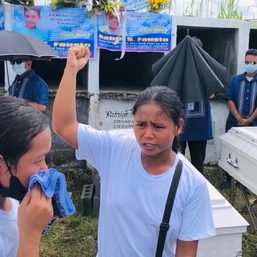
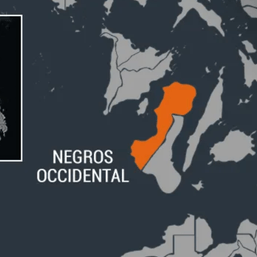
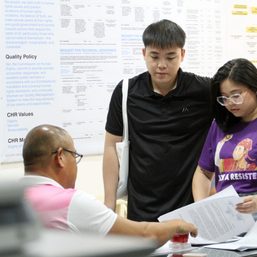
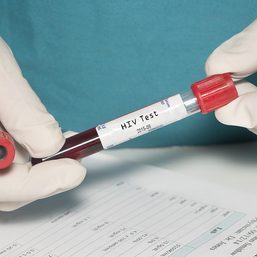
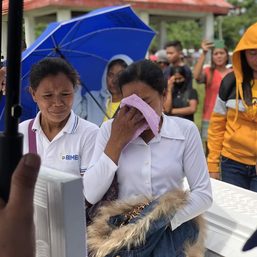
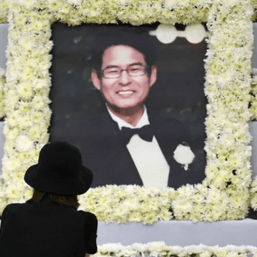

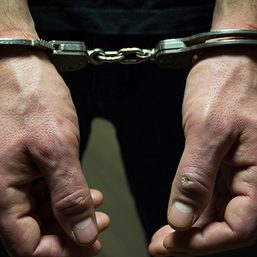




![[The Slingshot] Lito Patay’s 4 hours and 38 minutes of infamy](https://www.rappler.com/tachyon/2024/07/Lito-Patay-4-hours-infamy-July-19-2024.jpg?resize=257%2C257&crop=233px%2C0px%2C720px%2C720px)

![[Pastilan] The Great Philippine Identity Sale](https://www.rappler.com/tachyon/2024/07/great-philippine-identity-sale-july-16-2024.jpg?resize=257%2C257&crop=486px%2C0px%2C1080px%2C1080px)



![[WATCH] Bamban POGO scandal: There’s a bigger fish than Alice Guo](https://www.rappler.com/tachyon/2024/07/inside-track-tcard-bamban-pogo.jpg?resize=257%2C257&crop=435px%2C0px%2C1080px%2C1080px)
![[Vantage Point] China’s silent invasion of the Philippines](https://www.rappler.com/tachyon/2024/07/TL-china-silent-invasion-july-16-2024.jpg?resize=257%2C257&crop=318px%2C0px%2C720px%2C720px)
![[OPINION] Rodrigo Duterte and his ‘unconditional love’ for China](https://www.rappler.com/tachyon/2024/04/rodrigo-duterte-xi-jinping-august-2019.jpeg?resize=257%2C257&crop=91px%2C0px%2C900px%2C900px)



There are no comments yet. Add your comment to start the conversation.